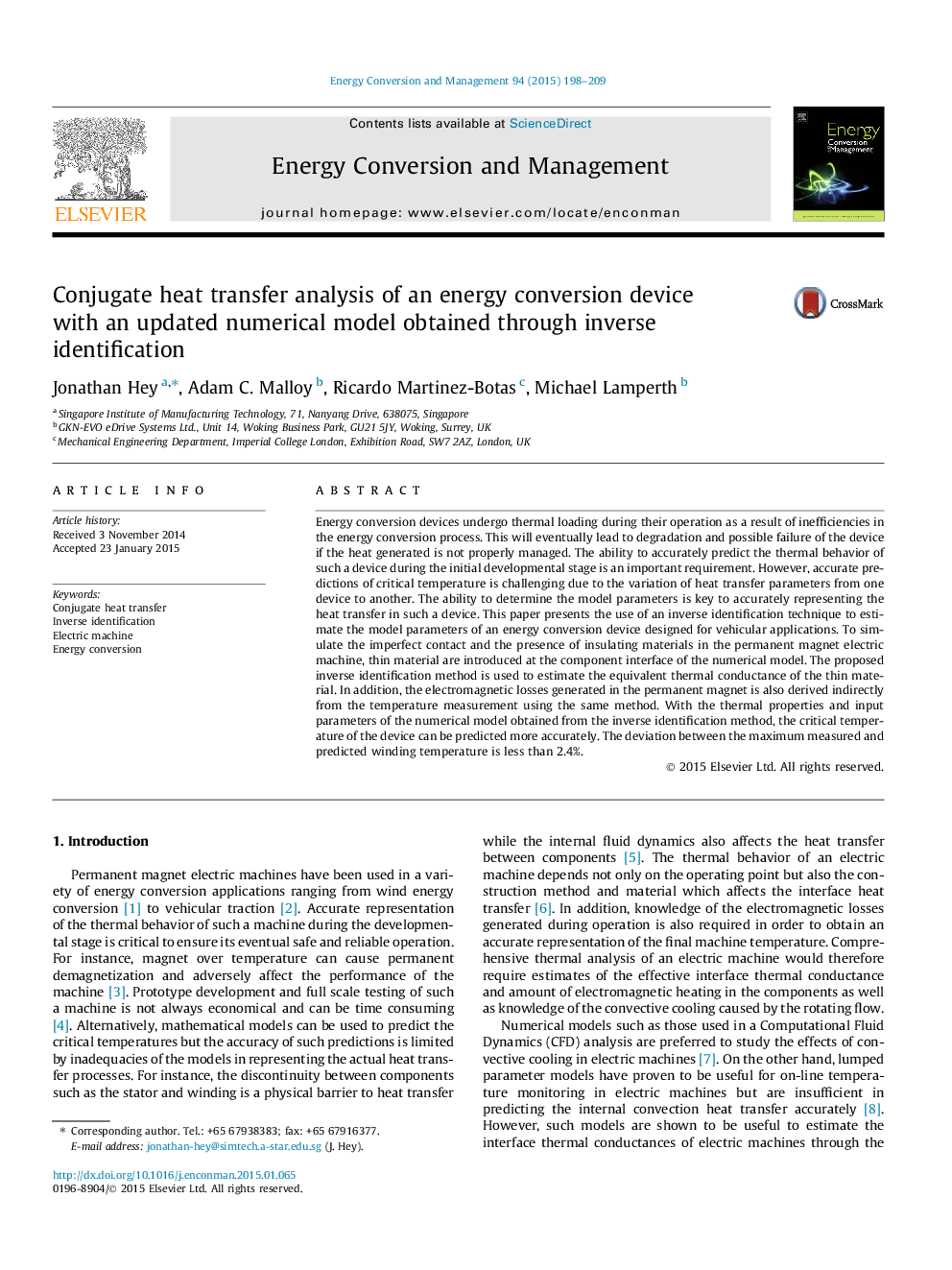| Article ID | Journal | Published Year | Pages | File Type |
|---|---|---|---|---|
| 7162801 | Energy Conversion and Management | 2015 | 12 Pages |
Abstract
Energy conversion devices undergo thermal loading during their operation as a result of inefficiencies in the energy conversion process. This will eventually lead to degradation and possible failure of the device if the heat generated is not properly managed. The ability to accurately predict the thermal behavior of such a device during the initial developmental stage is an important requirement. However, accurate predictions of critical temperature is challenging due to the variation of heat transfer parameters from one device to another. The ability to determine the model parameters is key to accurately representing the heat transfer in such a device. This paper presents the use of an inverse identification technique to estimate the model parameters of an energy conversion device designed for vehicular applications. To simulate the imperfect contact and the presence of insulating materials in the permanent magnet electric machine, thin material are introduced at the component interface of the numerical model. The proposed inverse identification method is used to estimate the equivalent thermal conductance of the thin material. In addition, the electromagnetic losses generated in the permanent magnet is also derived indirectly from the temperature measurement using the same method. With the thermal properties and input parameters of the numerical model obtained from the inverse identification method, the critical temperature of the device can be predicted more accurately. The deviation between the maximum measured and predicted winding temperature is less than 2.4%.
Related Topics
Physical Sciences and Engineering
Energy
Energy (General)
Authors
Jonathan Hey, Adam C. Malloy, Ricardo Martinez-Botas, Michael Lamperth,
